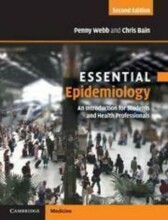E-modules ons measures of association and public health impact
8 important questions on E-modules ons measures of association and public health impact
Effect measure modification
- het geldt alleen voor jou data, bv in een ander land kan het anders zijn (genen, cultuur etc)
Interviewer / observer bias =
- exposure status is differently interpreted by interviewer
- interviewer elicits exposure status differently
e.g. Smoking behavior in lung cancer cases
Two types of validity
- that you are measuring in your cohurt study what you intent to measure and that this is free of bias
external validity / generazability
- how representative is your sample can you extrapolate your result to a broader population
- Higher grades + faster learning
- Never study anything twice
- 100% sure, 100% understanding
Main source of selection bias cohort study:
Association measures in study designs
- prevalence ratio
prospective studies (trails, cohort studies)
- relative risk (incidence rate ratio, incidence proportion ratio)
case control studies
- odds ratio
Interpretation of ratio measures
1 = no association between exposure and disease
>1 = positive association or increased risk
< 1 = negative association, decreased risk, or protective effect
example:
RR = 2 interpreted as twofold increase in risk
RR = 0,5 interpreted as 50% decrease in risk
OR = 1 interpreted as no association
Population attributable risk (PAR); berekenen met
- incidence rate in population - incidence rat in unexposed
using incidence proportion:
- incidence proportion in population - incidence proportion in unexposed
using attributable risk and prevalence
- AR x Pe
What are the steps of an outbreak investigation
- Confirm outbreak and diagnosis
- form outbreak control team
- define a case
- identify cases and obtain information
- describe data by time, place, person
- develop hypothesis (on source)
- test hypothesis: analytical studies
- additional studies
- communicate results: outbreak report, publication
- implement control measures
The question on the page originate from the summary of the following study material:
- A unique study and practice tool
- Never study anything twice again
- Get the grades you hope for
- 100% sure, 100% understanding






























